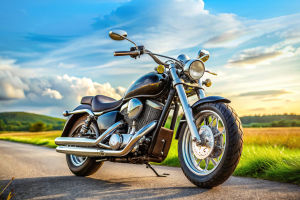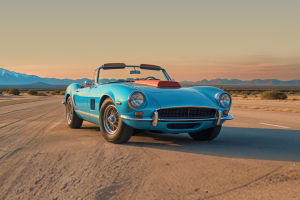Chopper motorcycles emerged in California in the late 1950s. These bikes were typically customized by extending the front forks and altering the steering angles to create a longer and more unique appearance.
Some Choppers were modified from existing bikes (or "chopped") while others were built from the ground up.
The Distinctive Features of Choppers
What makes a Chopper stand out? These motorcycles typically feature a longer front end, extended forks, higher steering angles, hardtail frames, tall ape hanger handlebars, or even ultra-short handlebars. They often have a stretched frame and larger front wheels compared to standard bikes. The most famous Choppers appeared in the 1969 film Easy Rider, featuring two custom-built Harley-Davidson motorcycles.
The Rise of Bob-Job (1946-1959)
Before Choppers, there were Bobbers, which were simplified motorcycles where riders removed excess parts to make the bike lighter, faster, and more visually appealing. A notable example is the 1940 Indian Sport Scout Bobber, which was displayed at the 1998 motorcycle art exhibition.
The First Choppers in America
The first Choppers were built in America when civilians modified cars and motorcycles. Early Choppers were often based on Harley-Davidson bikes and were often called "Bobbers." The key modification was adjusting the frame to allow for longer rides.
The Early Choppers (Late 1950s to Early 1960s)
By the early 1960s, the trend of motorcycle customization was growing, with larger Harley-Davidson bikes dominating the scene. Customization included narrower tires, forward foot pegs instead of traditional footrests, and smaller headlamps and fuel tanks. This was when the Chopper style, as we know it today, truly began to take shape.
The 1960s: The Iconic Era of Choppers
The massive success of the 1969 film Easy Rider helped popularize Choppers worldwide. What was once a subculture in certain parts of the United States became a global phenomenon. By the late 1960s, European Chopper manufacturers also emerged, including the “Swedish Chopper” style. Motorcycle shops began to multiply, and suppliers of Chopper parts expanded as well.
The 1970s: The Chopper's Peak
During this decade, Choppers became symbols of rebellion and individualism. The extended front forks became longer, and handling became more difficult, but the emphasis was more on style than on performance. One rider famously said, “You can't turn very well, but you do look great."
The 1980s and 1990s: Engineering Improvements
By the 1980s, Harley-Davidson introduced the Softail design, which hid the rear shock absorbers under the engine, giving the bike the appearance of a hardtail. At the same time, Chopper designs began to evolve to balance better performance with aesthetic appeal. Innovations in materials and manufacturing improved Chopper performance, with bigger engines, stronger frames, and larger tires becoming the norm.
The 21st Century: Chopper on Reality TV
In the early 2000s, the Discovery Channel aired shows about Chopper builders, bringing them massive attention. Jesse James and his West Coast Choppers became household names, and his company began producing high-end Choppers. The popularity of Chopper-themed merchandise, including clothing and car accessories, also skyrocketed.
The 2010s: A Return to Classic Styles
As time passed, many Chopper builders began to move away from the Harley-Davidson models and started using overlooked bikes, like the Yamaha XS-650, or old Harley Sportsters, to create new Choppers. This period also saw a return to traditional styles, with builders like Indian Larry from Psycho Cycles reviving old-school Chopper designs. Despite the rise of new technologies, classic elements like wide belt drives and Shovelhead engines became more popular again.
From the rebellious beginnings in the 1950s to the reality TV fame of today, Chopper motorcycles continue to captivate people around the world. Whether it's the classic style or the desire for individuality, Choppers remain an iconic symbol of motorcycle culture. So, Lykkers, are you ready to jump into the timeless world of Chopper motorcycles?


